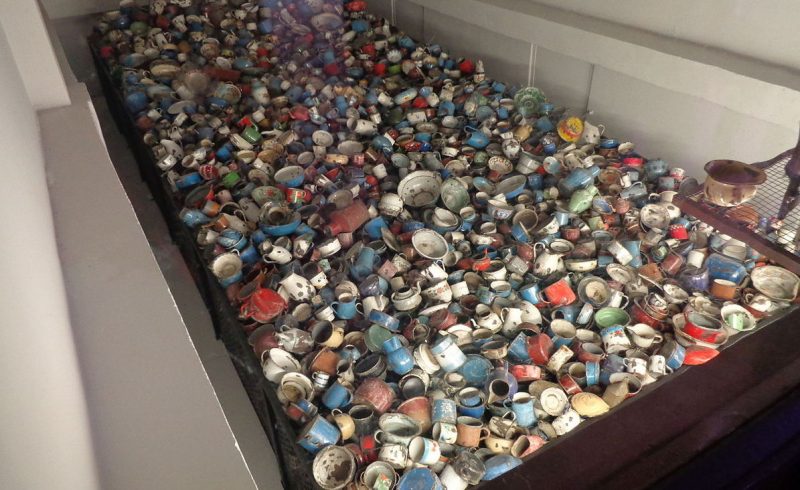Some rings are given as a token of love; some are displayed as a sign of wealth, and some are simply admired for their beauty. Throughout history, there were many rings which marked the wearer or bearer as someone of power or royalty. Here is a story of a ring that is neither beautiful nor valuable in the typical sense – a ring that symbolizes hope and endurance under terrible circumstances.
During a “housekeeping” session at the Auschwitz Museum, a staff member found that one of the very ordinary enamel mugs on display was rattling. On further investigation, it was found that a false bottom had come loose, and there was something hidden inside. The mug was a typical example of thousands of similar enamel kitchen items which were found when the camp was liberated in 1945.
Every prisoner, on arrival at the camp, was stripped of all possessions, and many of those items are on display there today. On carefully removing the false piece, at the bottom of the mug, a personal treasure was revealed. Some old canvas was wrapped around a chain and a ring, believed to have been made in Poland between 1921 and 1931. One could imagine the owner carefully wrapping and hiding these precious items in the hope of a better future.
Since it is usually difficult to find any identifying marks on or with such items – meaning that the ring cannot be returned to its owner or their relatives – it will be displayed in the museum as a symbol of hope and perseverance.
The atrocities committed against Jewish people during WWII are well documented and continue to haunt many to this day. Many museums concentrate on this era of history, documenting the horrors of this time and the endurance of many of the individuals who suffered through them.
Perhaps the most well known of the Nazi concentration camps is Auschwitz, where the Auschwitz-Birkenau Museum stands today. It is a holocaust museum which remembers the atrocities people can perpetrate against each other while also bearing testament to the strength and humanity human beings can show in the face of such overwhelming oppression.
The anonymous ring from the enamel mug is displayed in the museum, just as it was found. It stands as a symbol of hope and the determination to survive shown by the nameless owner.
